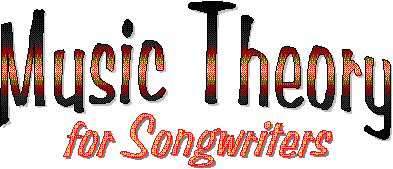


The following charts and maps are designed to print on one page.
In these keyboard charts, the notes shown are played by the right hand.
The bass note, played with the left hand, is not shown. Usually the bass
note is the same letter name as the chord. For example, any chord
with the name C (Cm6, CM7...) would have a C as its bass note.
(To come back to this page, click on the "Back" button on your browser.)
Scale Diagrams for the Twelve Major Keys
Chords With The Name C
More Chords With The Name C
Chords With The Name Db
More Chords With The Name Db
Chords With The Name D
More Chords With The Name D
Chords With The Name Eb
More Chords With The Name Eb
Chords With The Name E
More Chords With The Name E
Chords With The Name F
More Chords With The Name F
Chords With The Name Gb
More Chords With The Name Gb
Chords With The Name G
More Chords With The Name G
Chords With The Name Ab
More Chords With The Name Ab
Chords With The Name A
More Chords With The Name A
Chords With The Name Bb
More Chords With The Name Bb
Chords With The Name B
More Chords With The Name B
The Big Map In C
The Big Map In Db
The Big Map In D
The Big Map In Eb
The Big Map In E
The Big Map In F
The Big Map In Gb
The Big Map In G
The Big Map In Ab
The Big Map In A
The Big Map In Bb
The Big Map In BThe Generic Map for Major Scales
"G" at Harp On encouraged me to create a generic map
and this is the result. It has a few more green circles, and some
connections that are not included in the Big Maps.Interactive, Playable Chord Maps
We now have a program (which runs on Windows PC's) that allows you to click on a map and hear the chord as well as see it displayed on a virtual keyboard. This program is especially helpful for music theory students, songwriters who have never had a chance to take music theory courses, and anyone learning to play the piano by ear. The program is described at another site called MusicToolsForPeople.com. If you are interested in exploring lots of chords by clicking with a mouse, click on one of the images below.
On to Music Theory For Songwriters - Part 6
How Were The Maps Developed?
When I was studying music theory in college, I was introduced to ideas pertaining to chords and chord flow. After leaving college, I was teaching piano to young students for a while. Searching for ways to make chord flow accessible to young minds, I began drawing diagrams that would allow a child to create strong progressions. It seemed best to put each chord at a visual location with arrows to direct the flow. I experimented with different variations before choosing what I now call the Simple Map. Years later, I added the secondary chords that make the Big Map look the way it does. A few adjustments were made to create the generic map.
I hope these pages, charts, and maps will help you understand chords and how they flow together. Enjoy writing music. Love and peace to all.
Index - Part 1 - Part 2 - Part 3 - Part 4 - Part 5 - Charts and Maps
Part 6 - Part 7 - Part 8 - Part 9 - 1st Steps in Keyboard - Part 10
Part 11 - Part 12 - 1st Steps in Note Reading
Copyright 2004 Steve Mugglin
Permission is given to make not-for-profit copies
of this material.